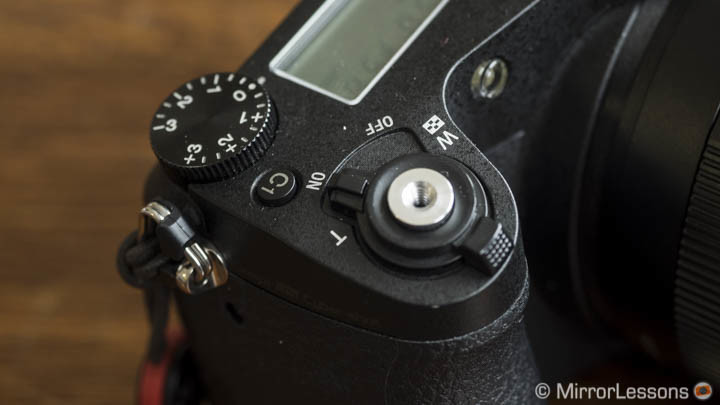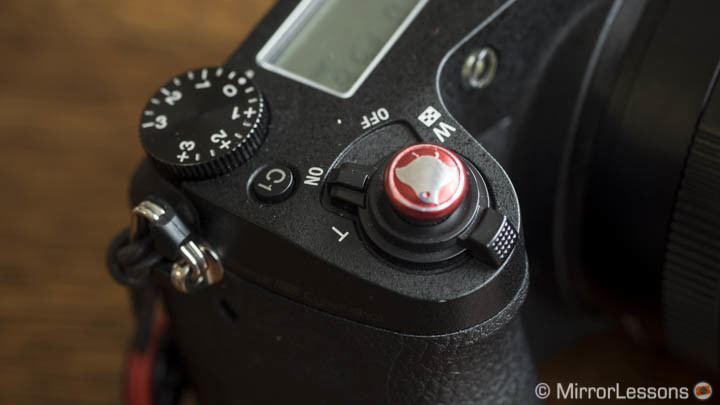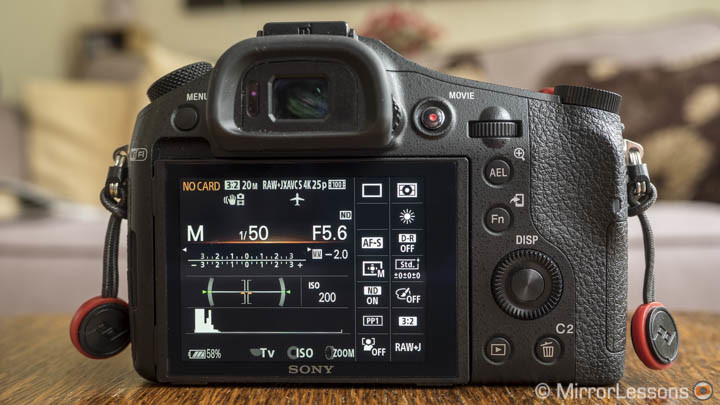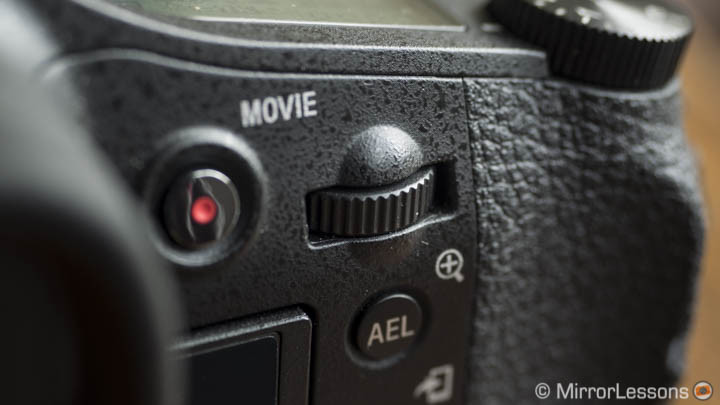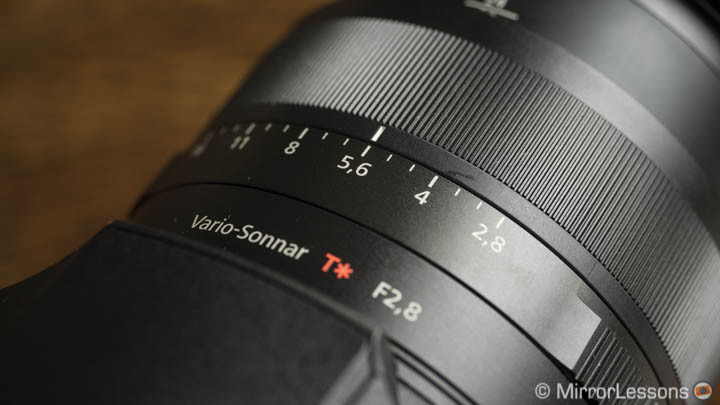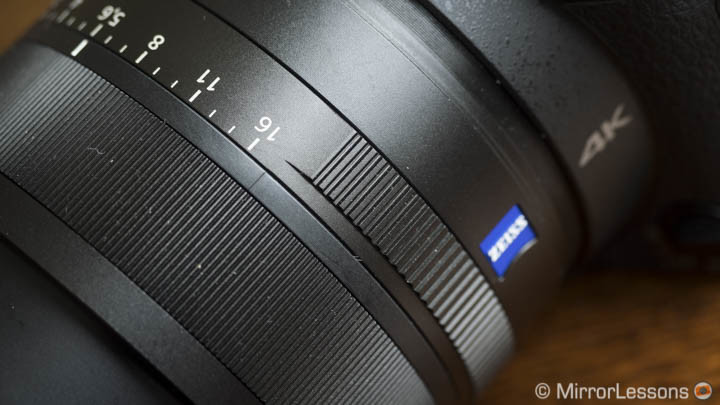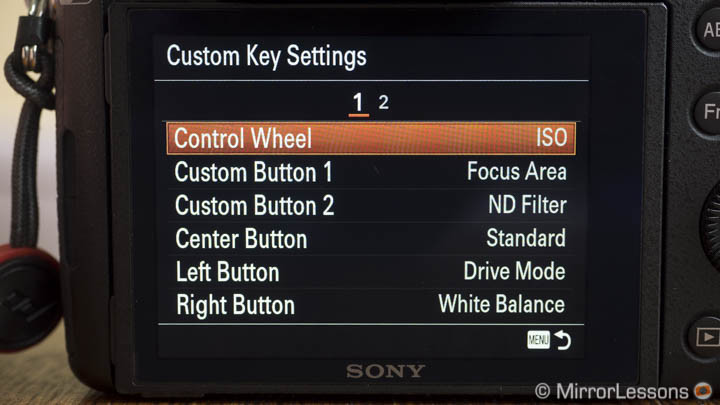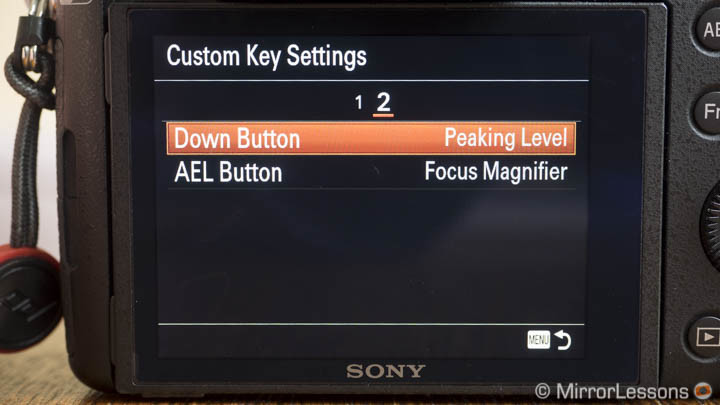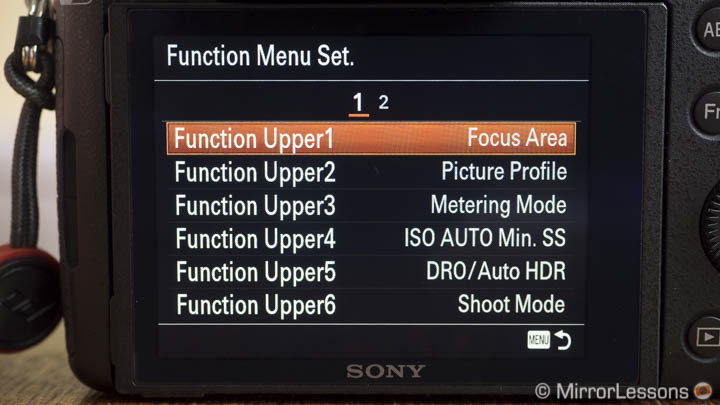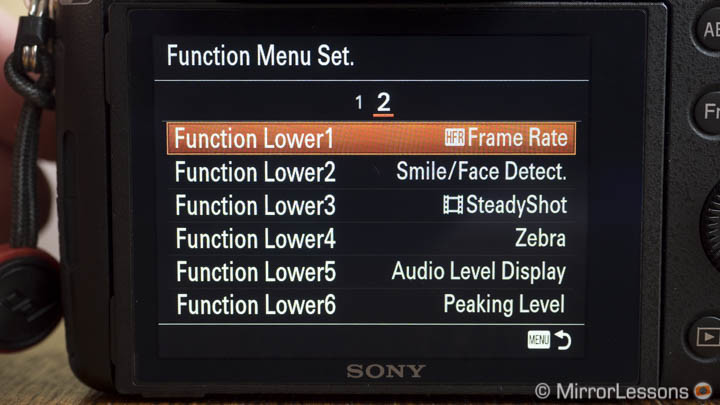The 1-inch sensor premium compact camera market is growing at a rapid pace. In fact, today, nearly every major brand has interesting offerings including Canon, Nikon, Sony and Panasonic. The segment aims to replace the previous generation of compact cameras that has now been taken over by smartphones. They are more expensive but also deliver better image quality and advanced functionalities.
Today we are looking at not one of the most recently announced products but rather, one of the most interesting. The Sony RX10 mark II is a “bridge” camera that features advanced video functionalities and a versatile zoom lens that covers the equivalent focal length of 24-200mm (35mm format equivalent) with a bright and constant aperture of f/2.8.
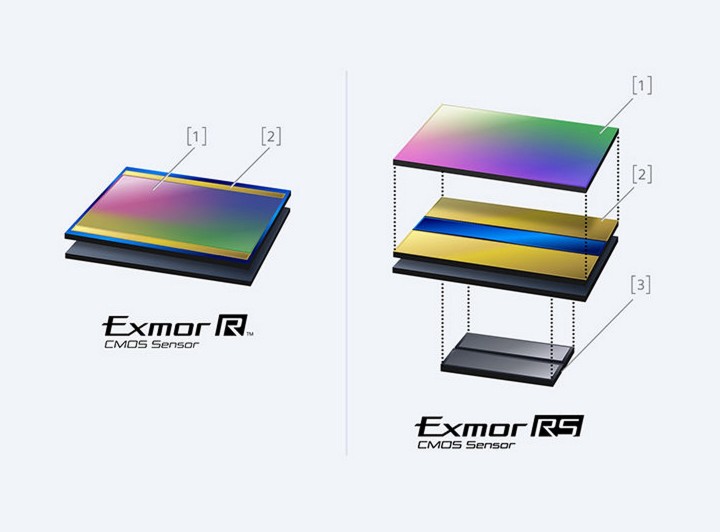
[2] Hi-speed signal processing circuit
[3] DRAM chip (memory)
Is the Sony RX10 II the perfect “hybrid” all-in one camera? Let’s find out!


Sony RX10 mark II Main Specs
- Sensor: 20.2 MP 1.0 inch Exmor RS CMOS
- Lens: 8.3x zoom, 8.8-73.3mm f/2.8 (24-200mm in 35mm format equivalence)
- Weatherproof: Partial (Splash and dust proof)
- Internal Stabilisation: Optical Steadyshot
- Autofocus: Contrast detection AF
- Continuous shooting: 14 fps (AF-S), 5,5 fps (AF-C)
- ISO Sensitivity: 100 – 12800 ISO (pull 64 and 80, push 25600 with Multi NR)
- Shutter Speeds: 1/3200 to 30 seconds, up to 1/32000s with electronic shutter
- Viewfinder: XGA OLED 0.39 inch electronic viewfinder with 2,359k dots, approx. 100% FOV coverage and 0.70x magnification
- LCD Screen: tilting 3″ LCD monitor (1,228k dots)
- Movie recording: XAVC S in 4K (up to 30fps), Full HD up to 120fps, High Frame Rate (250, 500, 1000fps)
- Built-in Flash: Yes
- Extra Features: WiFi, NFC, Panorama, Timelapse, HDR
- Dimensions: 129 x 88.1 x 102.2mm
- Weight: 813g (including battery and memory card)
[toc heading_levels=”3″]
Design, Ergonomics and Ease of Use
Although its design might suggest the contrary, the RX10 II is actually quite small, light and compact for what it provides. The camera features a magnesium alloy body and is resistant to water and dust. It is light and quite comfortable to hold thanks to the prominent grip.
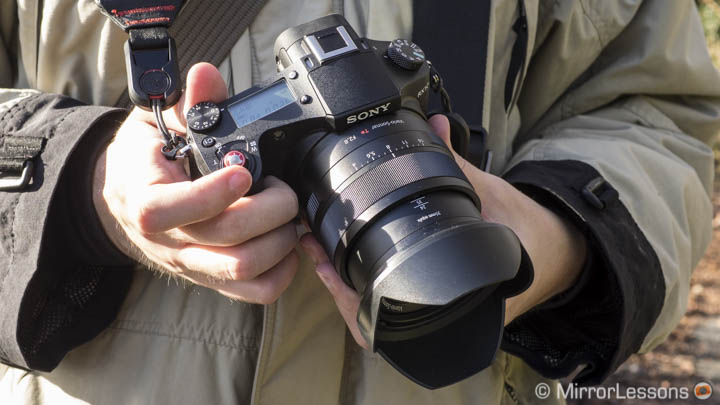
The camera has lots of external control to make the user experience as complete as possible but not everything is perfect.
For example I found that the shutter release button isn’t sensitive enough (on my review sample at least). I had to press it really hard to take the shot. Fortunately it is threaded and the experience improved with a soft release button. (Ours is from Lensmate.)
Another button that lacks sensitivity is the command dial on the rear that you can use to change the shutter speed. Often I would turn it but none of the settings would change unless I insisted. Making it slightly larger would probably help.
A similar command dial on the front where the grip is found would also be a neat idea.
Finally, the control wheel on the rear is a little bit too free, something that I’ve noticed on most Sony cameras that feature the same type.
The aperture ring on the lens is definitely a plus for both stills and video use. It has two ribbed grips on the side but depending on the aperture chosen and consequentially the positioning of the ring, they can be difficult to locate when composing with the electronic viewfinder.
Another dial that I found really uncomfortable is the Focus Mode dial on the front that allows you to switch between Single, Continuous, DMF and Manual focus. The direction in which you have to turn it is not very intuitive. I always had to look directly at it to understand exactly what I was selecting.
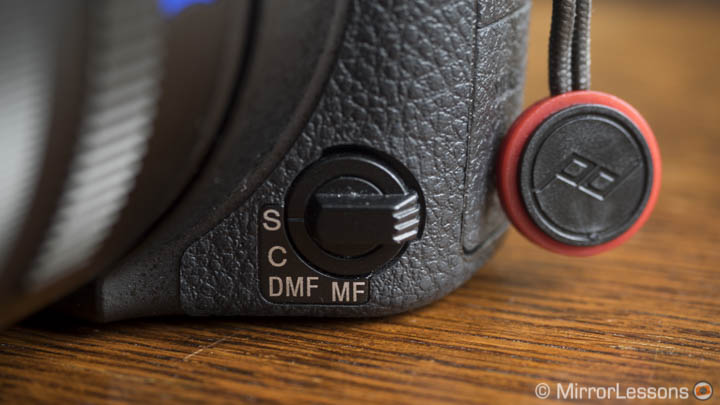
The zoom lens has an electronic motor and can be used with the dedicated toggle around the shutter release button. My experience with it has been mixed but not because of the camera itself.
For stills, I simply find a mechanical zoom ring more effective, fast and intuitive. For video however, the electronic zoom makes more sense especially if you choose the Standard speed in the menu, as it produces a smooth and slow movement in and out. So your experience with it will really depend on what you plan to use the camera for: stills or video.
[twentytwenty]
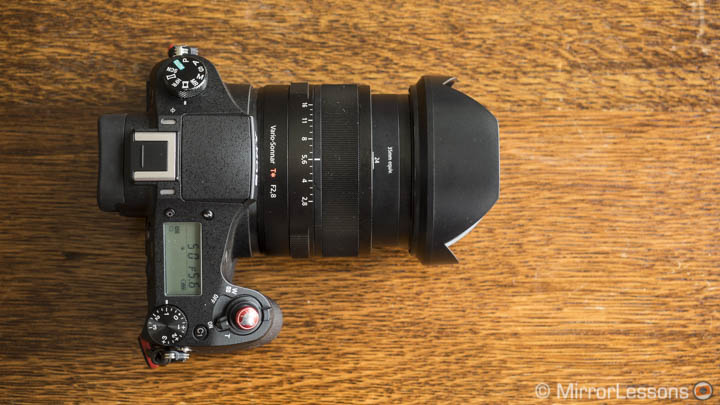
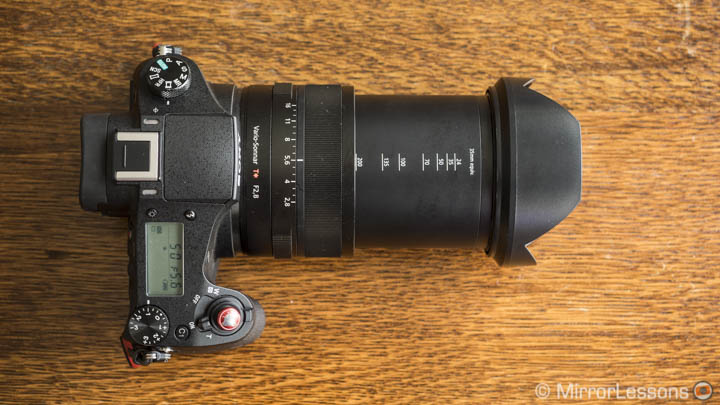
[/twentytwenty]
The electronic viewfinder offers good brightness, resolution and clarity but I find it too small (it’s a 0.39 inch type). The eye sensor is way too sensitive and it often disables the LCD while I am composing with it.
Not everything is negative however.
For example the small LCD screen on top is very useful to check your settings on the go, something that is present on many DLSRs as well as two mirrorless bodies, the Leica SL and Samsung NX1. There is a dedicated button to activate its retro-illumination for better use in low light.
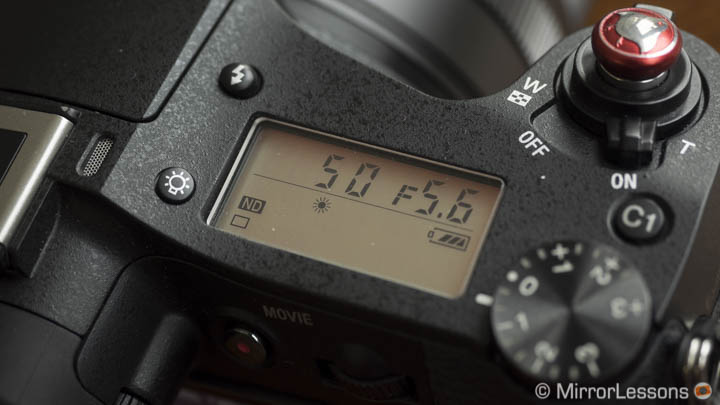
The exposure compensation dial is also very useful and comfortable to reach with your fingers.
The main LCD monitor on the rear can be tilted, has excellent sharpness and I find it very good for video work overall. It doesn’t flip to the side which in some cases would be more suitable but it is a minor flaw.
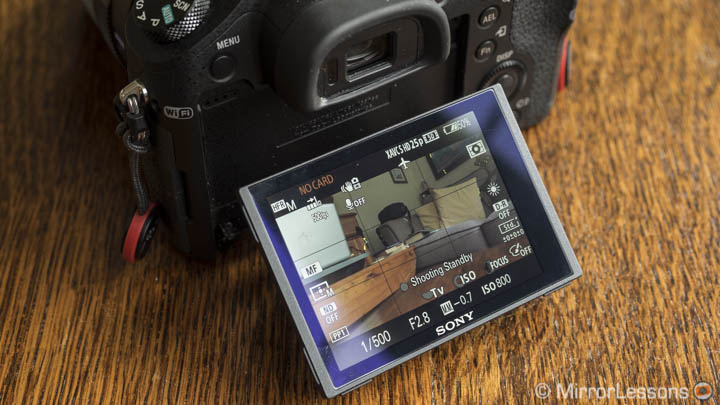
The camera offers a good level of customisation. It has 8 custom buttons including the control wheel that I set to the ISO sensitivity. Below are my favourite customisation settings:
Image quality
The RX10 II shares the same sensor as the RX100 mark IV and many other 1 inch compact cameras (with sensors made by Sony) so I won’t go too in-depth in this chapter.
What is important to know is what I’ve always said about the RX100 and RX10 series: the image quality is really good for a sensor that small in comparison to others on the market, yet it often produces results that aren’t too far off from Micro Four Thirds or even APS-C cameras.
The dynamic range is good although you have to be careful not to clip the highlights as the sensor is a little weak in that respect. However you have good versatility with the RAW files when it comes to recovering shadows up to 1.5 or even 2Ev. The JPG engine also gives good results when you use the DR Optimiser at level 4 or 5.




The high ISO performance remains good up to ISO 3200. There is noise but it isn’t too invasive and the level of detail remains acceptable. You really start to lose some sharpness at 6400 ISO and 12800 ISO especially. You will get the best results with the RAW files. With the JPGs, noise reduction becomes too severe and the lack of detail is more salient. The camera can also shoot at 25600 ISO with the Multi NR function, which merges 3 consecutive shots to minimize noise. However it is limited to tripod use in JPG mode.

Click on the image to open the full res version.

Click on the image to open the full res version.

Click on the image to open the full res version.
Note: you can check out a full high ISO gallery made with the RX100 IV here. The sensor and image processor is the same as the RX10 II, so the results are also the same.
Like most Sony cameras, the RX10 II has 13 different creative styles (colour profiles). One of my favourites is the Light profile. It gives good brightness and contrast without over-saturating the colours. The Vivid and Landscape profiles will add more contrast and saturated colours, with the latter having a warmer rendering. Autumn Leaves is also interesting for sunsets or other similar conditions.



The mechanical shutter goes as fast as 1/3200s. You can set the electronic shutter to Auto so that you can automatically increase the shutter speed if you need more. Thanks to the built-in Anti-Distortion shutter technology, the camera does a great job at avoiding rolling shutter issues for still images.
With the electronic shutter, you can shoot as fast as 1/32000s. If you combine that speed with the built-in ND filter (3 stops), you get compensation equal to 19Ev. Put in simple terms, you can shoot directly at the sun at midday and end up with a perfectly rounded shape. It is unlikely you will find the need to use this a lot but it just shows how powerful this little camera can be.

Optical quality
The built-in zoom lens of the RX10 II is one of the main reasons you’d be interested in this camera in the first place.
It is a 8.3x zoom with focal lengths going from 8.8mm to 73.3mm (24-200mm in 35mm format equivalence). The f/2.8 constant aperture through the entire zoom range proved very helpful for both stills and video. From wide shots of both landscapes and cityscapes to close-ups and portraits, this lens really covers all the bases.


At 24mm, the peak sharpness is found at f/4 at the centre but f/2.8 is also excellent and f/5.6 still usable. From f/8 diffraction starts to become severe and I wouldn’t use it past f/11. The corner performance is constant but overall not as sharp as the centre. At 200mm, the lens is softer at f/2.8 and once again the best performance is found at f/4 with f/5.6 giving acceptable results.
Overall I find this Carl Zeiss lens a good performer especially considering its versatility and constant aperture of f/2.8 but I am not overly impressed by its sharpness.
Distortion and vignetting are well contained at 24mm. I’ve noticed multiple traces of chromatic aberration in various shots but you can get rid of them easily with the RAW editing software. The camera doesn’t do a very good job of eliminating them from the OOC JPGs.
The lens can focus as close as 3cm at 24mm and 25cm at 200mm, offering good semi-macro capabilities. At f/2.8 you lose some sharpness but the results are still acceptable.

Click on the image to open the full res version.

Click on the image to open the full res version.
The bokeh is not bad but nothing impressive. You need to use the longest focal length to make it more pleasant. You get more rounded out-of-focus circles while at shorter focal lengths, the bokeh can appear more nervous.


The lens offers decent performance for portraits as well. The best results are at 200mm where the depth of field is shallower. You can see two examples below shot at the equivalent focal lengths of 100mm and 200mm.


The lens can suffer from flares such as ghosting flare and purple veiling flare. You can see two examples below.


The optical stabilisation is not the best I’ve tested but it will give you good results down to 1/15s at the longest focal length. You can achieve good results at 8.8mm (24mm) down to 1/5s.


Note: the steadyshot performance for video is found in the dedicated video chapter further below.
Autofocus and performance
The RX10 mark II has a contrast detection AF system. In Single mode with good light it is fast and reliable but I found that it hesitates more in low-light situations like the streets of a city at night.
You can choose between Multi, Zone, Centre and Flexible Spot. The latter has three different sizes and can be moved around the entire frame. You can also use Eye AF for portraits (you need to assign it to a custom button), face detection and Lock-On AF (Tracking).
In continuous mode, the performance is accurate enough when you set the continuous shooting mode to 5.5fps. With slow moving subjects like a train approaching a station it gives you 100% accurate results. With a fast subject moving towards you like someone running, it can hesitate a little more and the hit rate decreases to around 80%.


The RX10 II has a stunning continuous shooting speed of 14fps when you select speed priority. Focus will be locked on the first frame so even with C-AF selected the AF won’t track. The speed is pretty impressive and can allow you to catch some interesting moments by pre-composing the shot like the example below where I captured the bird flying off the feeder.

The buffer capabilities are also very interesting. At 5.5fps it is almost unlimited in JPG mode. Below are the results I have found for virtual memory. I used a Lexar Professional 1000x SDXC UHS-II U-3:
- 14fps with RAW: lasts for 4s then slows down considerably
- 14fps with X.Fine JPG: last for 6s then slows down (but keeps a faster rate than with RAW)
- 5.5fps with RAW: lasts for 8s then stops
- 5.5fps with JPG: last for 25s the slows down a little
Video
Along with the zoom lens, the video capabilities are the other reason to be interested in this camera.
The RX10 mark II can shoot 4K video at 25fps (PAL) and 30fps (NTSC). The quality of the footage is excellent. It is sharp, the full pixel readout leaves no trace of moiré or aliasing and the XAVC S codec does a great job with compression. At high sensitives, the noise is visible but I find it acceptable up to 3200 ISO.
The focus ring is of course a “fly-by-wire” type but I didn’t find it too uncomfortable to use. Combined with focus peaking, you get precise results and it is easy to use.
As I said already, the electronic zoom can be very smooth for video. However you can encounter wobbling issues and the noise of the zoom mechanism is quite pronounced when using the built-in stereo microphone. The optical steadyshot also works for video but you encounter lots of jittering and in some shots, it can be quite pronounced.
Continuous AF works well for static scenes but don’t expect great performance with fast subjects.
The camera has dedicated picture profiles for video that are more interesting to use than the Creative Styles, as you have better control of blacks, highlights, gamma curves and saturation. I always use the same profile with all the Sony camera I test and I am very satisfied with it.
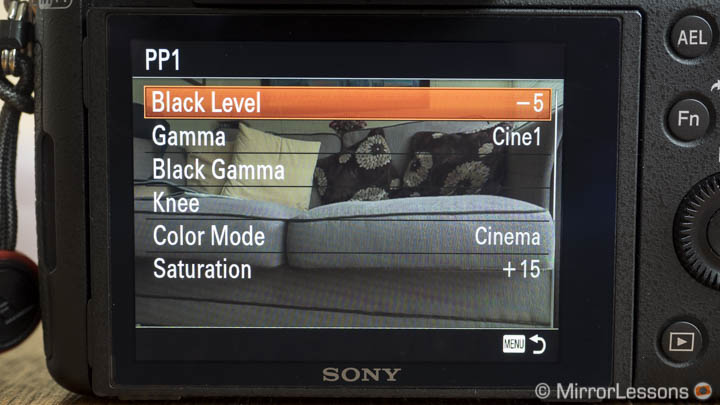
You can also choose S-log2 gamma which gives you more dynamic range. It is a flat picture that you have to colour correct in post-production. Personally I don’t find this solution the best unless you grab a better 4:2:2 signal from the HDMI port to an external recorder. The S-log2 gives you more dynamic range but also more noise. If you don’t know how to post produce properly, you might not get the results you want.
You can see examples of the 4K quality as well as the zoom smoothness, optical stabilization, picture profiles and s-log2 in the video below.
The camera can also shoot Full HD up to 120fps with the XAVC-S codec and the quality remains excellent.
Furthermore, there is a dedicated HFR (High Frame Rate mode) that allows you to shoot slow motion video up to 1000fps in full HD. This is by far one of the most impressive aspects of this camera.
I suggest that you check out my dedicated article about shooting in slow motion with the RX10 II and RX100 IV. You can see a video example below.
There is a mic input and headphone port if you want to record better audio. The RX10 II is also compatible with the Sony XLR adapter.
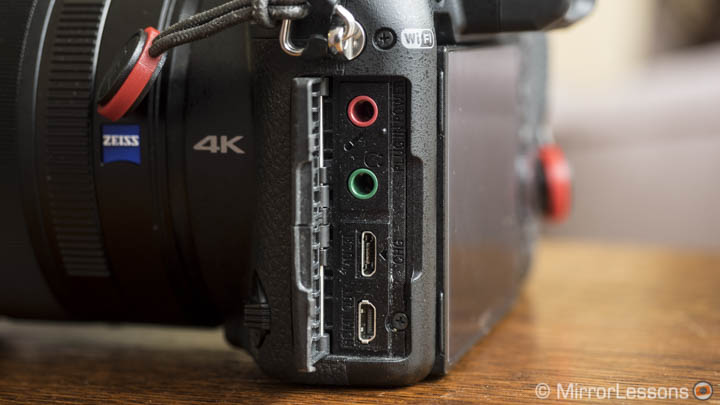
Another thing video makers will highly appreciate is the built-in ND filter. It really helps you keep a reasonable standard shutter speed (1/50s or 1/60s) when shooting outdoors. It is definitely one of the options I appreciated the most while shooting video with this camera.
Other options worth mentioning include Zebra patterns (very important when shooting HFR) and timecode.
Other features
The RX10 II has some other functions that I never tend to use that much like for example the Scene selection where the camera chooses the optimal settings automatically depending on the type of shot you want (Portrait, Sports etc). There are also some picture effects like partial colour or toy camera, and a Panorama mode (JPG only).
The camera has a built-in flash with slow synch and rear sync options. It offers decent performance despite being so small but I admit I rarely used it. It is also compatible with the Sony wireless system (with compatible flash units).
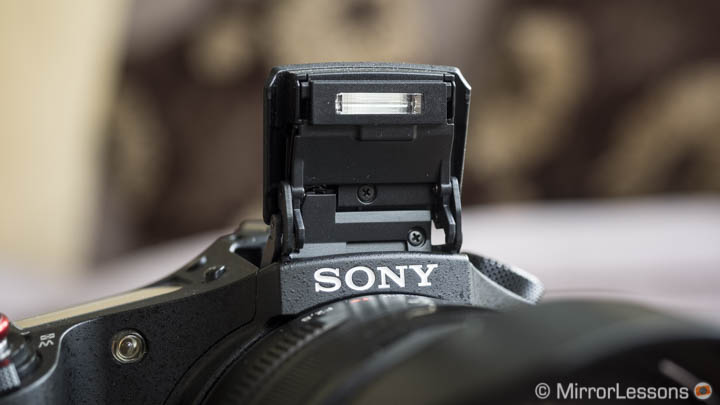
There are various bracketing modes including WB, DRO and AE (up to 3 EV and 5 images). You can choose between single and continuous bracketing. The latters means that the camera will take the different exposures automatically while you hold the shutter button down.

There are Wi-Fi and NFC capabilities, as well as the possibility to remotely control the camera with a mobile device. You can also download apps for the Playmemory store to add functionalities but not all of them are free.
The camera doesn’t come with a proper battery charger but can be charged via USB.
For a camera that is also designed with advanced video functions, it is a shame not to have a battery charger and two batteries especially considering that the RX10 II is not a cheap product.
I hope that Sony will break this bad habit one day.
The battery life is not bad and will get you through the day if you just take pictures. As soon as you start to shoot at 14fps or record 4K video and slow motion, it drops fast. I advise at least one spare battery.
Conclusion
The RX10 mark II is an excellent example of a product that has almost everything you need for stills and video in one package. The versatility of the lens plays an important role, as do the quality of the sensor and the video capabilities.
It is not perfect mainly because mixing these two things without sacrificing something else is nearly impossible. The electronic zoom mechanism is a good example: it is more comfortable for video but less so for still images.
There are improvements Sony can make to the next model concerning the sensitivity of certain buttons and the overall ease of use. A larger EVF would also be a welcome addition as well as implementing phase detection for better AF performance (look at what Nikon did with the 1 inch sensor of its 1 system).
With all that said, I admit that the RX10 II is tempting only if you intend to exploit its video characteristics at least 50% of the time, if not more. Just as a still camera, I am not sure it would be my first choice also because of the high price (around $1300). I see it as a second camera that can complement a larger system or an excellent choice for travel or other situations where you don’t want to deal with interchangeable lenses or two camera bodies.

Personally the best experience I had with it was at the Sony press event for the a6300 and GM lens launch. I used the RX10 II to take all the product shots and the 4K footage I needed to edit my hands-on videos for our Youtube channel. The light conditions weren’t optimal most of the time but the camera did well. For this kind of work, it’s nearly perfect.
The camera has some interesting competition as well. There is the Panasonic FZ-1000 that has a longer zoom range and 4K video. Nikon recently announced its new line-up of DL cameras including one with a 24-500mm f/2.8-5.6 zoom. Canon also has the G3 X with a 24-600mm lens but is lacking a built-in viewfinder. While I haven’t tested all these different options, I feel the RX10 II has some unique features like the slow motion capabilities that can be more appealing.
Finally a word about the RX100 and RX10 series. Having tested both cameras it is inevitable that we’ll end up comparing them, even if they differ a lot when it comes to dimensions and portability.
Despite being larger, the RX10 II felt more like a complete solution. The longer reach of the zoom lens really helps in a lot for situations like events, portraits or anywhere you need a longer reach. The grip is way better and for long shoots, I simply find it more comfortable. In a way, it suits the ethos of a 1 inch sensor camera more than the RX100.
The RX100 IV of course has the obvious advantage of being pocketable and nothing can beat that. But in my review I mentioned that I often missed having a longer reach.
 What I like about the Sony RX10 mark II:
What I like about the Sony RX10 mark II:
- Good grip and helpful secondary LCD screen on top
- The f/2.8 8.3x zoom is perfect for various situations
- Excellent quality for stills and 4K video
- Stunning slow motion video capabilities
- A perfect hybrid solution for advanced still and video shooting
 What I don’t like about the Sony RX10 mark II:
What I don’t like about the Sony RX10 mark II:
- Some buttons and dials are not comfortable to use
- Small EVF
- The optical quality is sufficient but not impressive
- AF is slower and less precise in low light
- Optical stabilization produces lots of jittering in video mode
- Wobbling when zooming in or out
- Battery life decreases rapidly when shooting in continuous mode, 4K video and HFR

